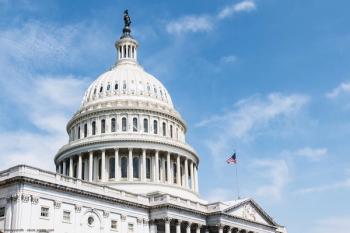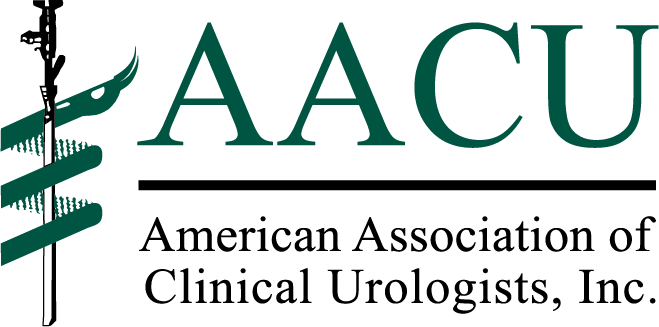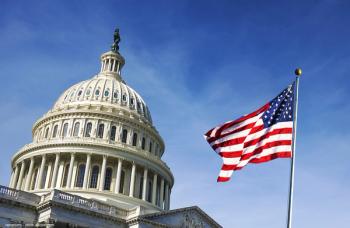
States strip away medical liability protections

"Policymakers must be thoughtful and act in the public interest. That includes weighing the benefit of continued liability safeguards," writes Ross E. Weber of the AACU.
Based on a partnership with Urology Times, articles from the American Association of Clinical Urologists (AACU) provide updates on legislative processes and issues affecting urologists. We welcome your comments and suggestions. Contact the AACU government affairs office at 847-517-1050 or
The coronavirus disease 2019 (COVID-19) public health emergency spurred swift adoption of long-sought public policies that have transformed the health care system. Patients are embracing telemedicine. Advanced practitioners are enjoying expanded authority. Providers are being granted a reprieve from ineffective liability laws. As the pandemic plateaus and we become accustomed to a “new normal,” the question becomes which changes will stay and which will go. Regrettably, state-by-state, shields from clinically constraining medical liability statutes are among the first emergency measures to be withdrawn.
Liability protections continue to be necessary because crisis standards of care vary greatly from non-emergency medical practice. During a public health emergency, focusing on the needs of each individual patient may be impossible because limited resources require the rationing of care. The Health Coalition on Liability and Access (HCLA)
• Physicians are being asked to provide treatments or care outside their general practice areas and for which they may not have the most up-to-date knowledge.
• Inadequate safety equipment can result in the transmission of the virus from patient to provider and then to additional patients, or directly from one patient to another.
• Inadequate testing could lead to delayed or flawed diagnosis.
• “Elective” surgeries and procedures are being delayed to preserve capacity.
• Patients with issues other than coronavirus are facing delayed treatments so that resources may be saved for coronavirus patients.
An institution’s ethics committee and the
Surveying this landscape, the Secretary of Health and Human Services insisted that he did not want state variations in liability protections to deter health professionals from providing care. Secretary Azar therefore urged governors to take action. Every state already had a Good Samaritan law on the books that generally offers immunity to licensed physicians who provide care without compensation at the scene of an accident. Twenty-two states amended those statutes in terms of defining or licensing a Good Samaritan and 17 adopted broader civil immunity to volunteers and/or paid physicians.
Several examples of state action have been singled out for duplication. Illinois Governor J.B. Pritzker issued an executive order on April 1 granting health care facilities, health care professionals, and health care volunteers immunity from civil liability when providing health care services in response to COVID-19, provided injuries were not caused by gross negligence or willful misconduct. The immunity is not limited to care rendered to patients diagnosed with COVID-19. Instead, the immunity extends to any injury that occurred at a time when a health care facility or professional was providing health care services simply in response to the COVID-19 outbreak. Governor Pritzker’s order follows a related March 7 New York order limiting civil liability. There, the legislature backed up Governor Andrew Cuomo’s executive order by approving the “Emergency Disaster Treatment Protection Act” as part of the budget bill. The measure grants immunity from civil and criminal liability for the purpose of “promot[ing] the public health, safety and welfare of all citizens.” Health care facilities are further protected by the law’s specification that a resource or staffing shortage will not be considered intentional, reckless, or criminal misconduct. In addition to New York, legislators in 5 other states, New Jersey, Connecticut, Illinois, Michigan, and Massachusetts, likewise passed actual laws to expand immunity.
One by one, however, these actions are being reversed. When Governor Pritzker prolonged several emergency measures in Illinois on June 26, he did not extend his directive on medical liability. In New York, the legislature giveth and the legislature taketh away. Governor Cuomo signed a new law on August 3, that takes away the liability shield for care that isn’t directly related to COVID-19. And in Michigan, Governor Gretchen Whitmer vetoed legislation on August 10 that would have granted limited immunity from lawsuits related to the provision of care to COVID-19 patients, the need to reschedule patient care due to governmental orders, and experiencing shortages of needed supplies.
In most instances, while states are slowly taking away protections, the implications of the original actions will extend beyond the public health emergency because statutes of limitation allow cases to be filed months, if not years, after the incident. Therefore, the limited and time-certain liability protections may still ease malpractice fears as physicians, facilities, and other providers continue to cope with unprecedented burdens on their time, energy, and resources.
Republicans in Congress are also considering federal assistance to add to or extend state actions. The Coronavirus Provider Protection Act, H.R. 7059, was introduced in the House by Tennessee Republican Phil Roe, MD, and California Democrat Lou Correa, and leaders in the Senate have insisted that liability issues be addressed in the next coronavirus relief legislation, expected to be considered later this summer and into the fall. What’s been happening these last several months is wholesale transformation. Policymakers must be thoughtful and act in the public interest. That includes weighing the benefit of continued liability safeguards.
Resources:
National survey of COVID-19 medical malpractice immunity legislation (Jackson & Campbell)
State directives related to medical liability and increasing access to care during COVID-19 pandemic (HCLA)
COVID-19: Recommendations for pursuing liability protections through state action (AMA)
Newsletter
Stay current with the latest urology news and practice-changing insights — sign up now for the essential updates every urologist needs.


















